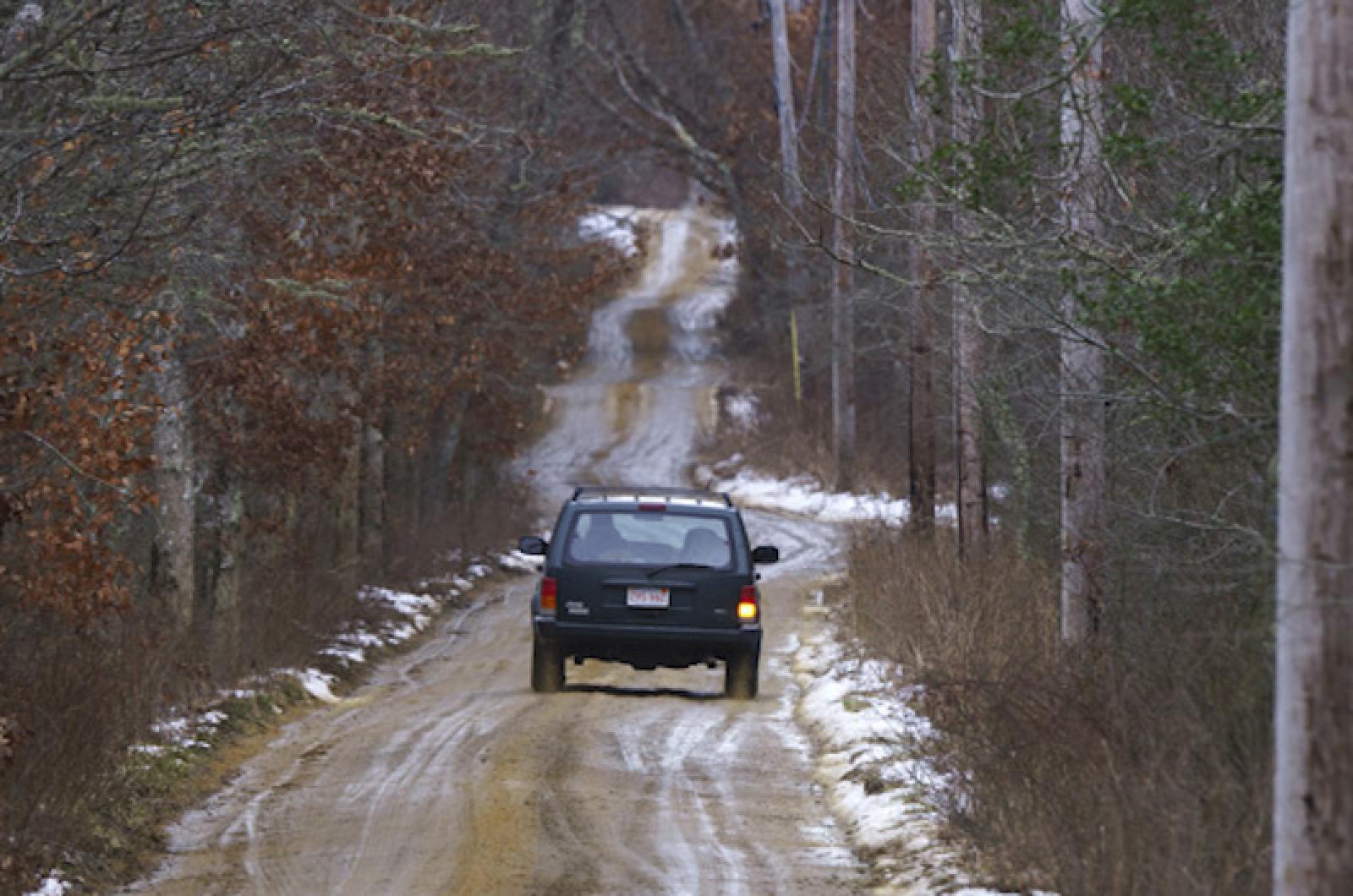From the April 6, 1956 edition of the Vineyard Gazette:
Everyone knows this Vineyard highway, some much better than others, naturally. Many people have written about this crooked, curving, narrow road, so charming with it’s high banks, in spots, and the over hanging mass of wild shrubbery, grape-vines and occasional wild apple trees along its sides.
But few people now living know the road as the “Dye-leaf” road. The accepted name, the official name, is Tea Lane. And Tea Lane it is and has been from that memorable period in American history when outraged colonists declared the embargo on tea, taxed by Great Britain. The tale of the smuggling of tea to his home by Capt. Robert Hillman is too well known to need repeating. This tale deals with its older name, for the Dye-leaf Road, under that name goes far back into history indeed.
A study of this road, and various others which are now public ways, will offer convincing evidence that the start of such a highway was along somebody’s private drive. A cart path by which the farm and homestead was reached from a more important way, public or otherwise.
Actually, it was this path which first brought people into the section where the dye-leaves were gathered. It was the north end of Tea Lane which was chiefly indicated when old people of fifty years ago spoke of it as the Dye-leaf Road. Entering from the south, or Middle Road, those same people were apt to speak of it as Tea Lane, which again suggests that it was not always a through way, but divided into two parts.
About the dye-leaves, probably a great deal could be said. Some of it inadmissible to the columns of a family newspaper according to tales of dyes and dyeing that have come down from the ancients. But this much is known, that the wild indigo was gathered here; indeed it still may be found in some of the fields bordering the old road. There were other plants and shrubs there also, which yielded the flaming red dye, and bushes, the twigs of which, steeped, would produce a sort of chocolate brown. Perhaps there were others, but tradition has failed to mention them.
Men, women and children followed the path into the Dye-leaf swamp, cutting the way deeper and broader as the years passed. Perhaps some man felled a tree across the brook, or otherwise improved conditions for walking; no one can be certain of this. But the people of fifty years ago waged a never ending struggle to keep it passable.
Springs, underground streams, volumes of water which welled up from somewhere within the earth, kept this portion of the road muddy for the greater part of the year, and whenever it rained, soft mud formed to a surprising depth and many a team has been stuck along that portion of Tea Lane which old-timbers called Dye-leaf Road.
For it was open at both ends, but the dye-leaf portion was the bane of all who used it. Alvin Flanders, last of the name to live upon it, went to his grave without realizing that the condition could ever be bettered. John Allen, son of Ephraim, brother of Ephraim and uncle of Ephraim, sold his estate as he advanced in years and moved, wearied of trying to keep the road in repair over which he was obliged to travel. Capt. Granville Manter, also last of his name to live “north of the ridge” suffered with the others, despite his reputed wealth.
Coming down to more recent resident-owners along this way, it is nobody’s fault, but nevertheless true that nearly all of them had lived and died, chopping brush and shoveling sand to keep the Dye-leaf Road open, before ways and means were found to make it as comfortable as any dirt road might be.
Much of the adjoining land has been abandoned as far as cultivation is concerned, and little or no livestock graze the hills. And nobody gathers dye-leaves any more, either, which is a statement that really should be added to the list.
Yet the vines, the shrubs which produced the dyes still grow luxuriantly as they did two hundred years ago and more. It is a place, where in summer, the air is heavily perfumed with the scent of bud and blossom, and where the songbirds gather to nest and feed, to drink from the streams and pools and to fill the shrubbery with the music of their singing.
It is a place where in winter the hardy varieties of bird may be found, the jay, feeding on the dried-up berries, flickers, going about whatever flickers do in a swamp, downy woodpeckers, and nut-hatches engaged in their upside-down pursuits. Through the intermingled branches of maple, oak and pine, the gray squirrels leap, and the rabbits run below. And always, when the air is still, the sound of running water can be heard. This is nearly all the time because no winds sweep the Dye-lead Road as they do in other places.
Walk there if you will. The mud, beneath the thick carpet of leaves is cold, wet and deep and few signs of its presence can be seen. But walk the road, alone, and listen. Perhaps the footsteps or even voices of ancient gatherers of dye-leaves may stir the ancient echoes.
Compiled by Hilary Wall
library@mvgazette.com




Comments (1)
Comments
Comment policy »